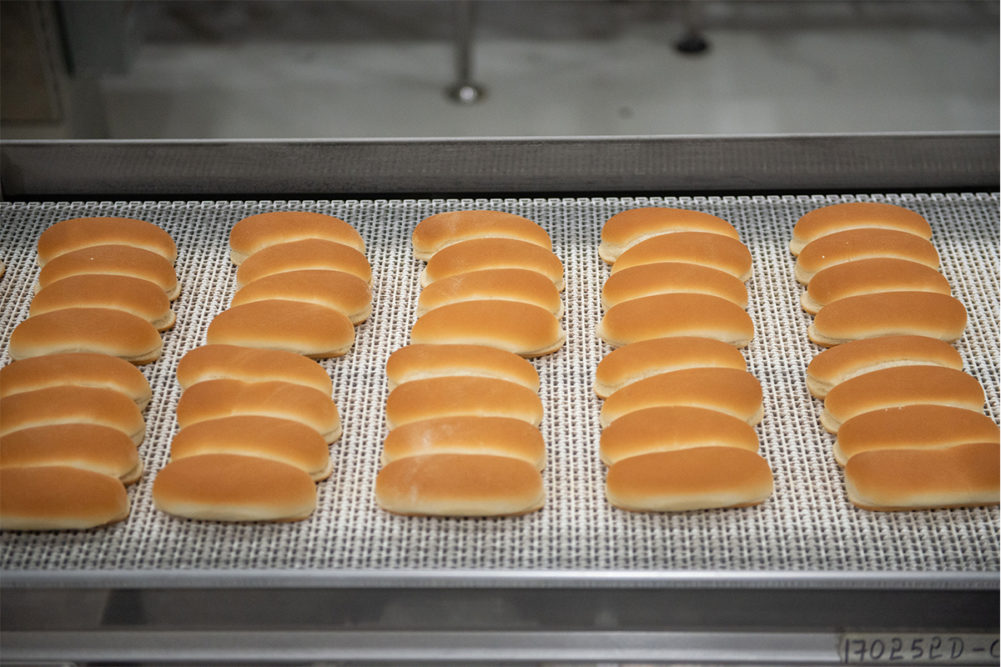The production run itself is the best place to start when trying to thrive during peak production periods. Sometimes these periods can be anticipated, in the case of holidays, for example. Bakers can look to the past to forecast times during the year when demand may be higher than normal. If that’s the case, then there are things operation teams can do to ease the burden on the line.
“One way to minimize the impact of running beyond capacity is to slowly build up inventory in advance and then identify ways to store and preserve product until it is needed,” said Earl Arnold, global quality manager, food defense and FSMA, AIB International.
Under today’s unpredictable circumstances, bakers may feel a little blindsided to these peaks compared with something as established as bun season. But with constant communication with customers, bakers can see what’s coming and prepare to meet their customers’ needs.
“This may allow the production demands to be shared amongst facilities to reduce the need to push production lines,” Mr. Arnold explained. “Ensuring that backup suppliers of ingredients and raw materials are included in the planning process can help if primary suppliers are having difficulty meeting demand.”
To further exacerbate the situation, supply chain delays and labor crunches are making it difficult for bakers to meet that demand. Jim Kline, president of The ENSOL Group, pointed out that bakeries sometimes find themselves turning away business because they simply don’t have the workforce or capacity to take it on. To prevent that, he stressed the importance of a plan.
“The best thing to do is have an awareness about your customers, what’s going on in the marketplace and understanding where you want to be with your business,” he said. “You have to know if you want to sustain your business or grow because sustaining still takes planning. And if you want to grow, how do you sufficiently grow and keep doing what you’re doing. You have to have an idea of where you want to be and have a plan. Those who do are handling this really successfully.”
Outside of preparation, bakers can also take steps to maximize the efficiency of their production lines. Changeovers, for example, create speedbumps and prevent bakeries from reaching their full throughput potential. Producing a wide range of SKUs with many changeovers helped bakers meet consumer demands for variety. But today, things have changed.
“Trying to run a bunch of short runs with long changeovers isn’t going to pay the bills,” said Rowdy Brixey, president of Brixey Engineering.
To optimize production, operations may have to have a heart-to-heart with sales about what products can be cut or consolidated. Mr. Brixey offered some difficult questions bakers will need to address as they rationalize their SKUs. “Can I consolidate that run and run it once a week instead of five days? Do we outsource it? Where do we make our money, and what do we keep, and what do we cut? Do we raise prices?”
This last question may be controversial, but it holds an upside. On the surface, increased volume may seem good. But without the resources to produce that volume, bakers find themselves in a potential conundrum, running equipment and employees into the ground. By raising prices, bakers could stem ever-climbing demand without impacting sales growth, while also providing some much-needed breathing room to the operations and maintenance teams.
When consolidating SKUs into one production run, Mr. Kline said retarders can be an asset.
“Specialty bakers have restaurant customers who may want product first thing in the morning, and others want them at 6 p.m.,” he said. “With a retarder you can produce Kaiser rolls for the entire day and then pull out of the retarder exactly what you need when you need it.”
Reaching out to a co-manufacturer to take on extra SKUs that are slowing down production can also be a solution to streamlining operations.
Even after streamlining, there will probably still be changeovers that are unavoidable. To make them simpler and faster, Mr. Brixey recommended creating set-up charts to help employees quickly and accurately change settings for each specific product. What may seem obvious to line supervisors will be valuable information to new employees.
“It’s fantastic for new, inexperienced talent,” he said. “Now they have a road map.”
This article is an excerpt from the October 2021 issue of Baking & Snack. To read the entire feature on Running Beyond Capacity, click here.





